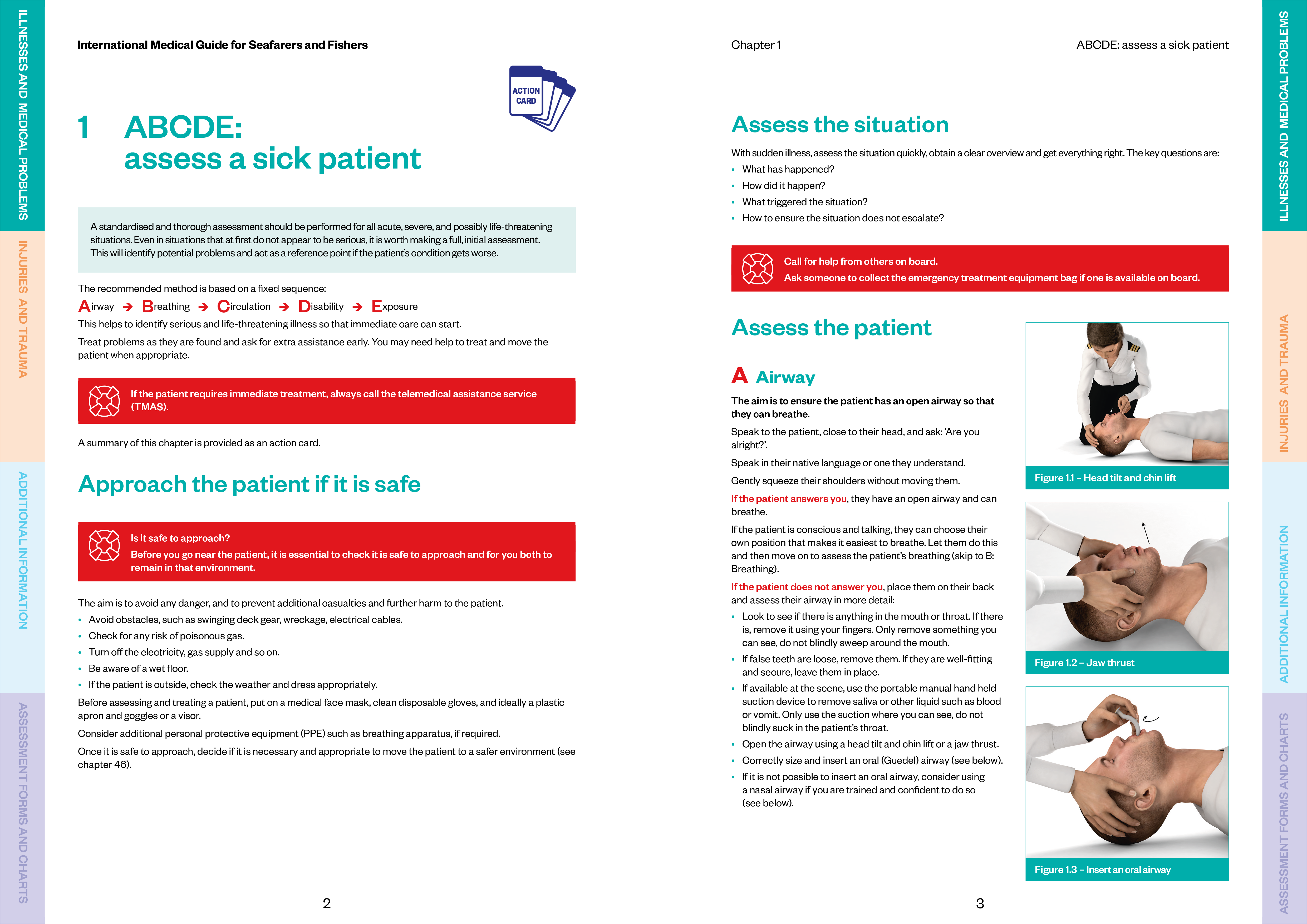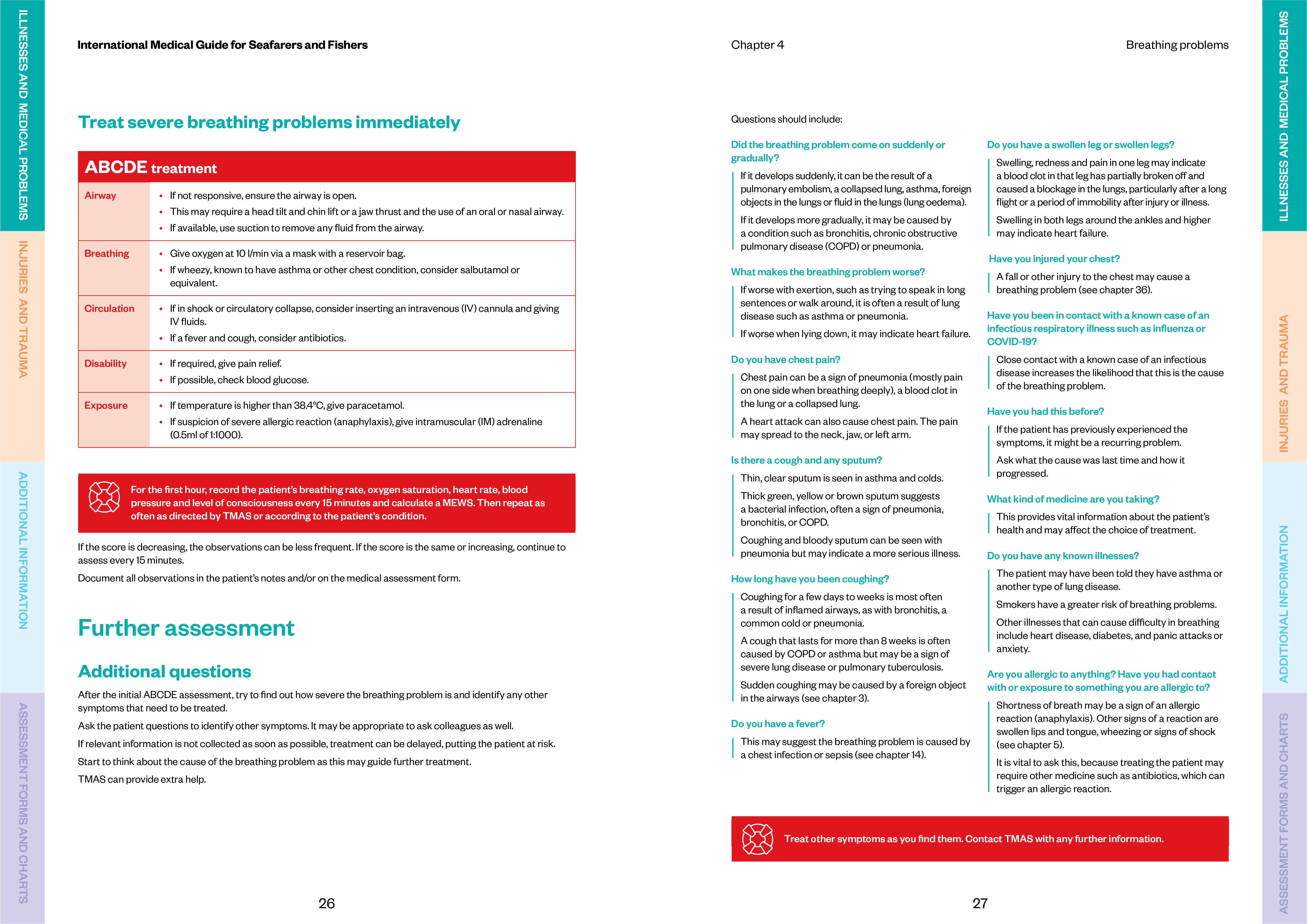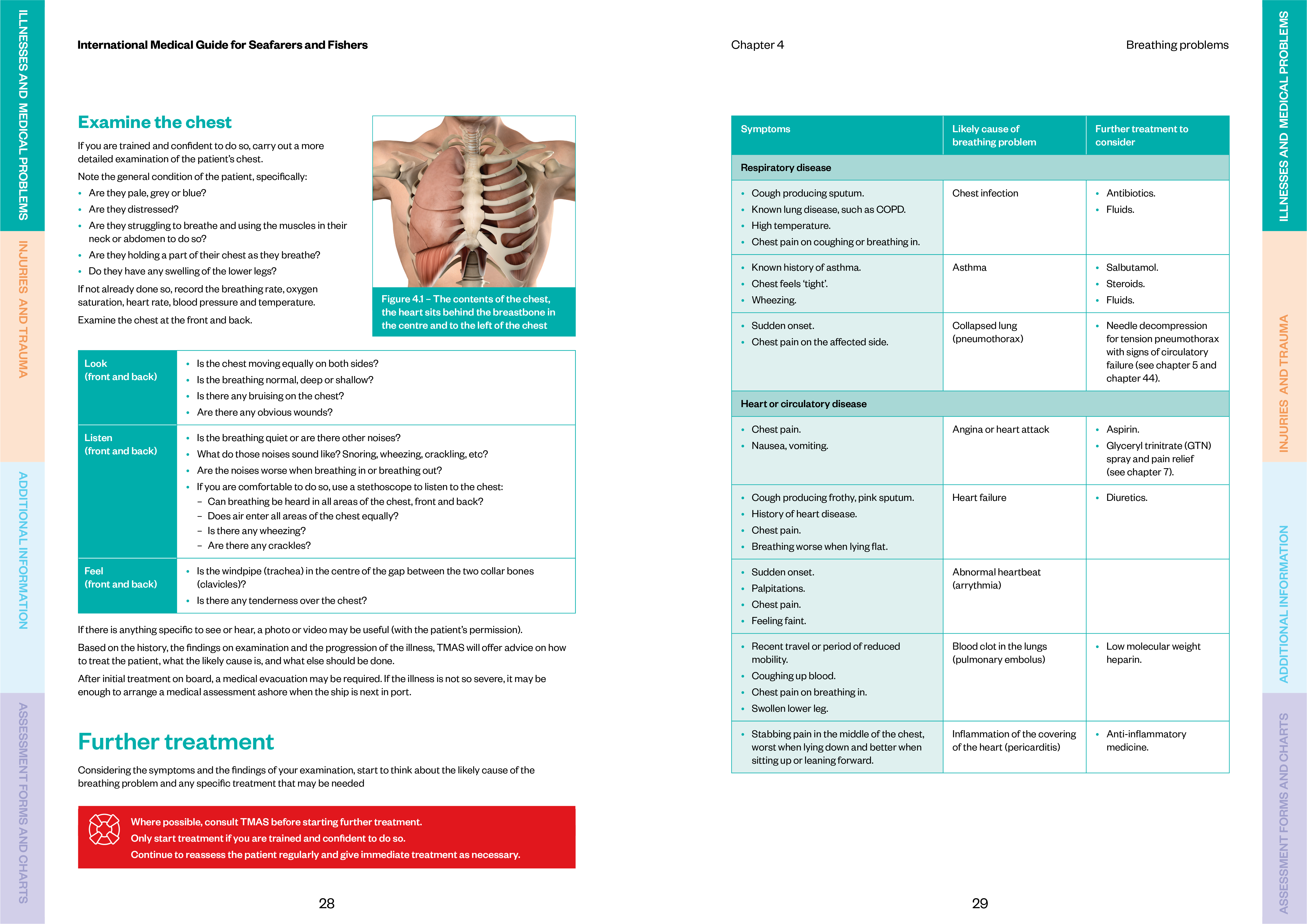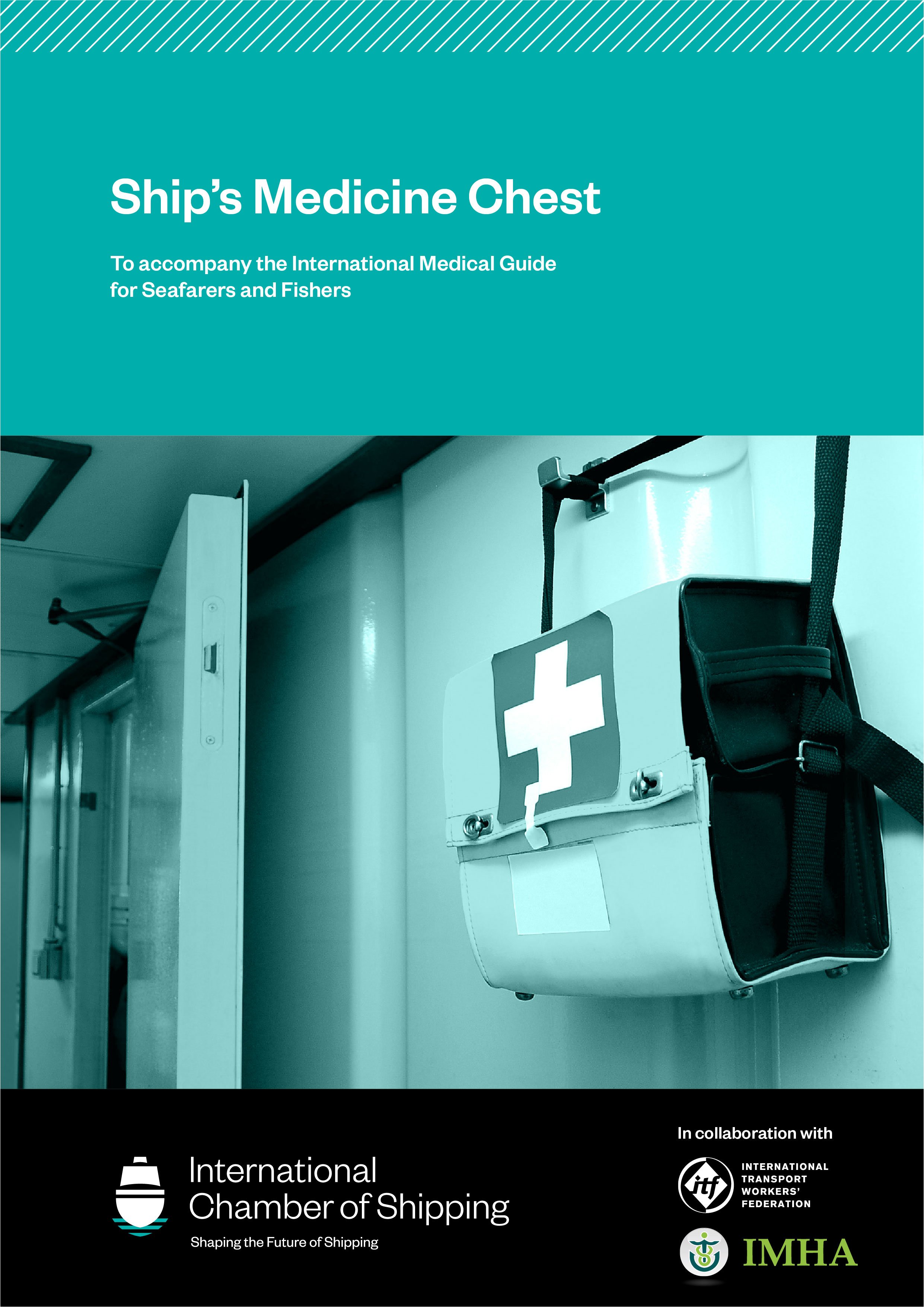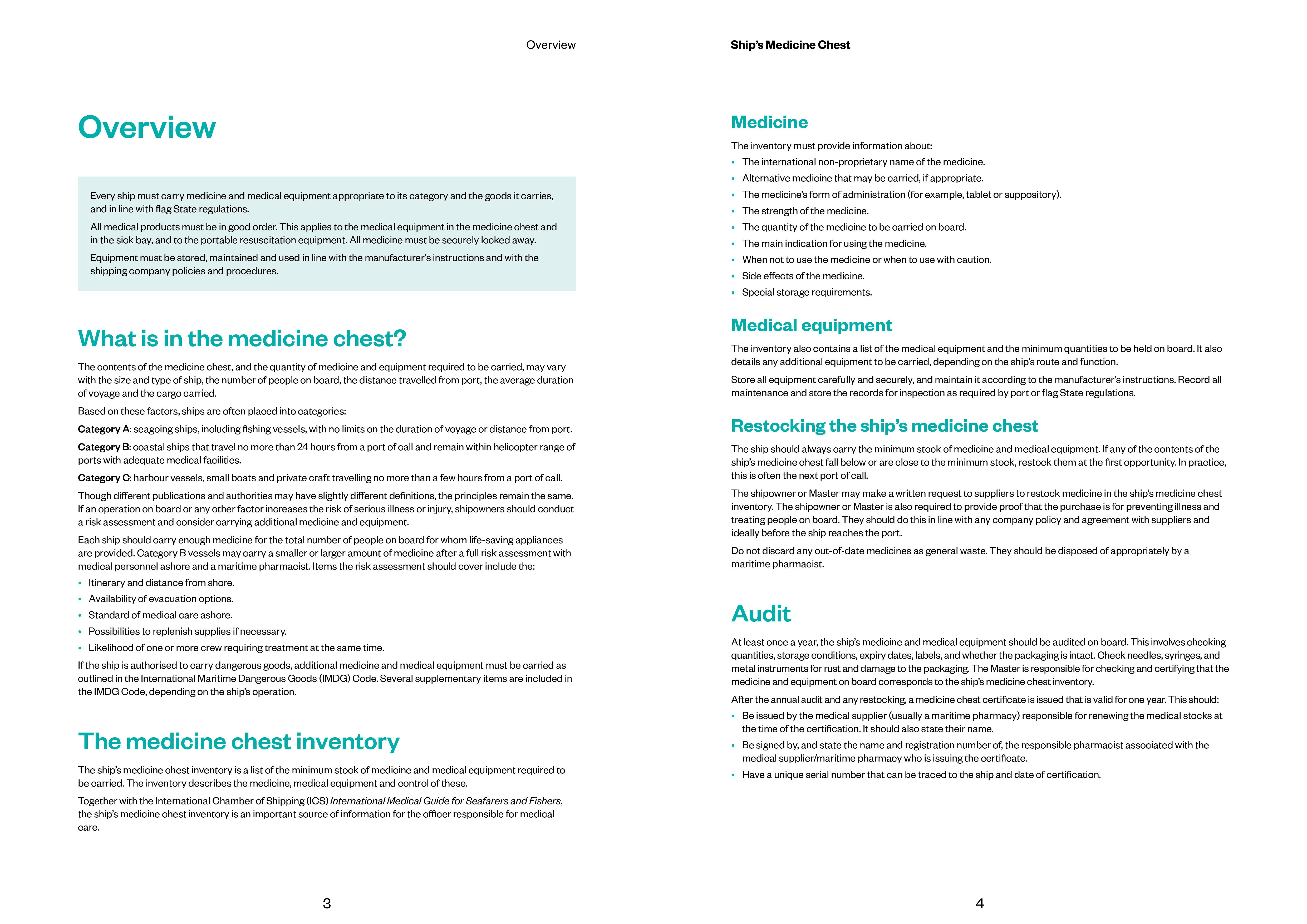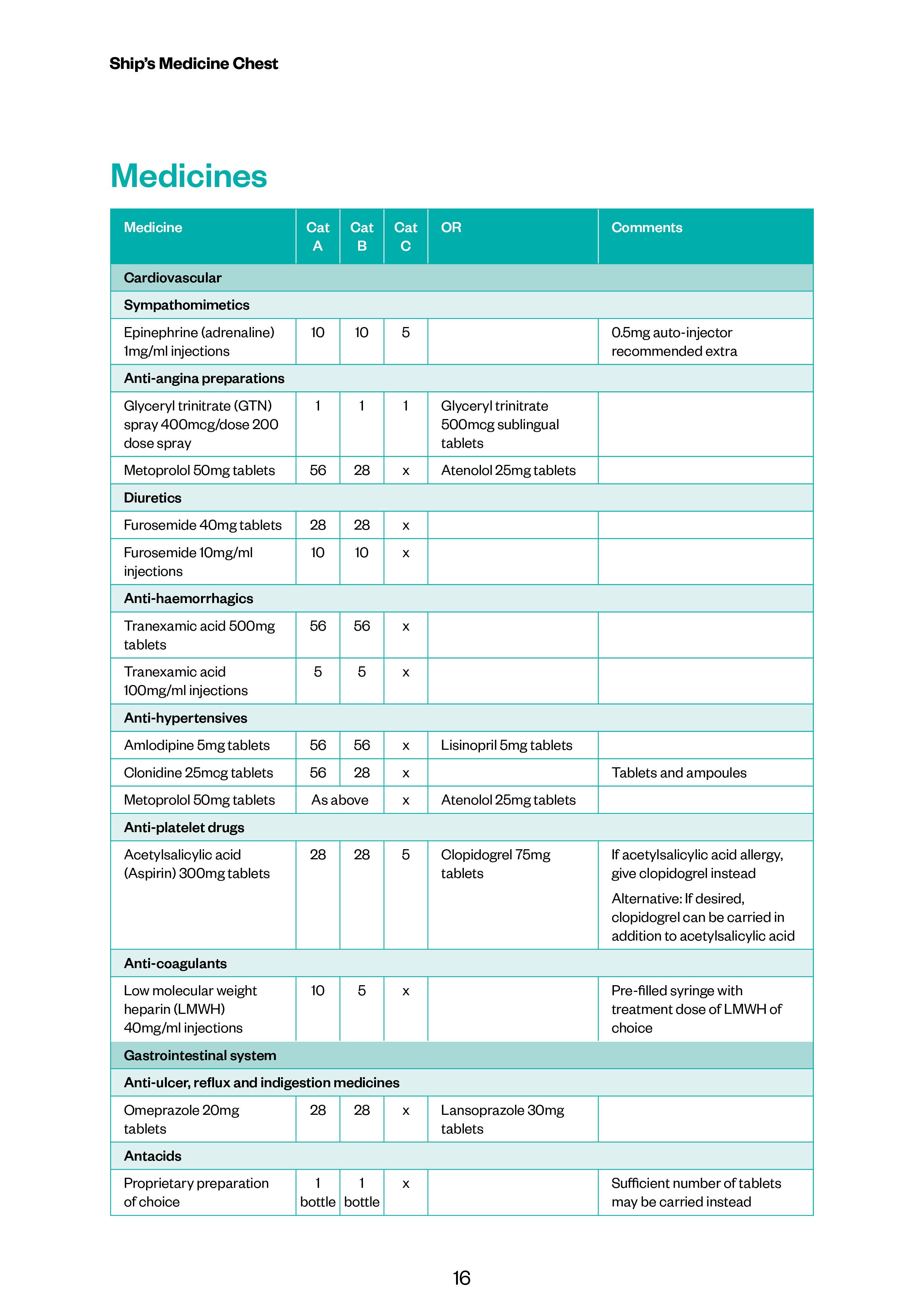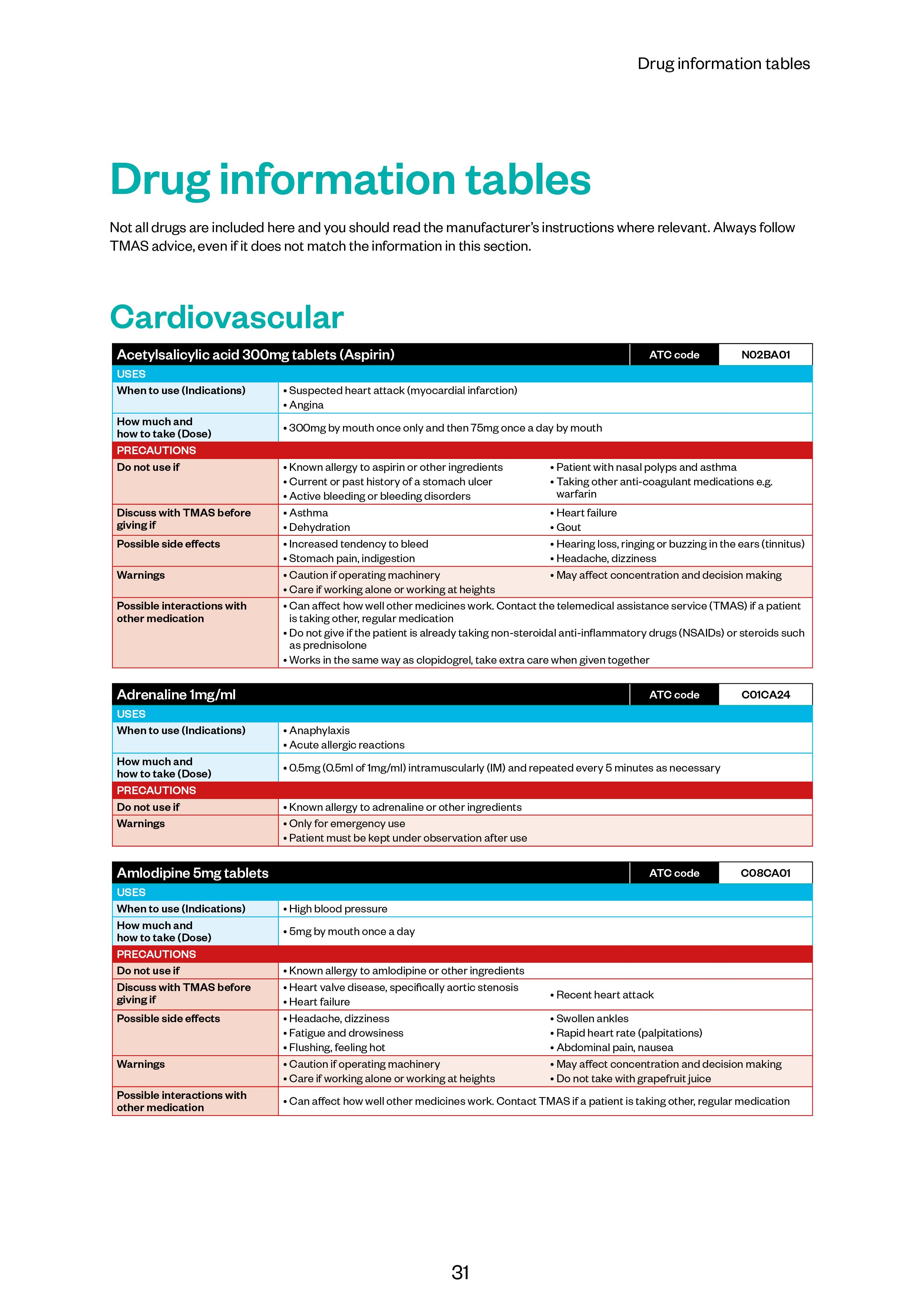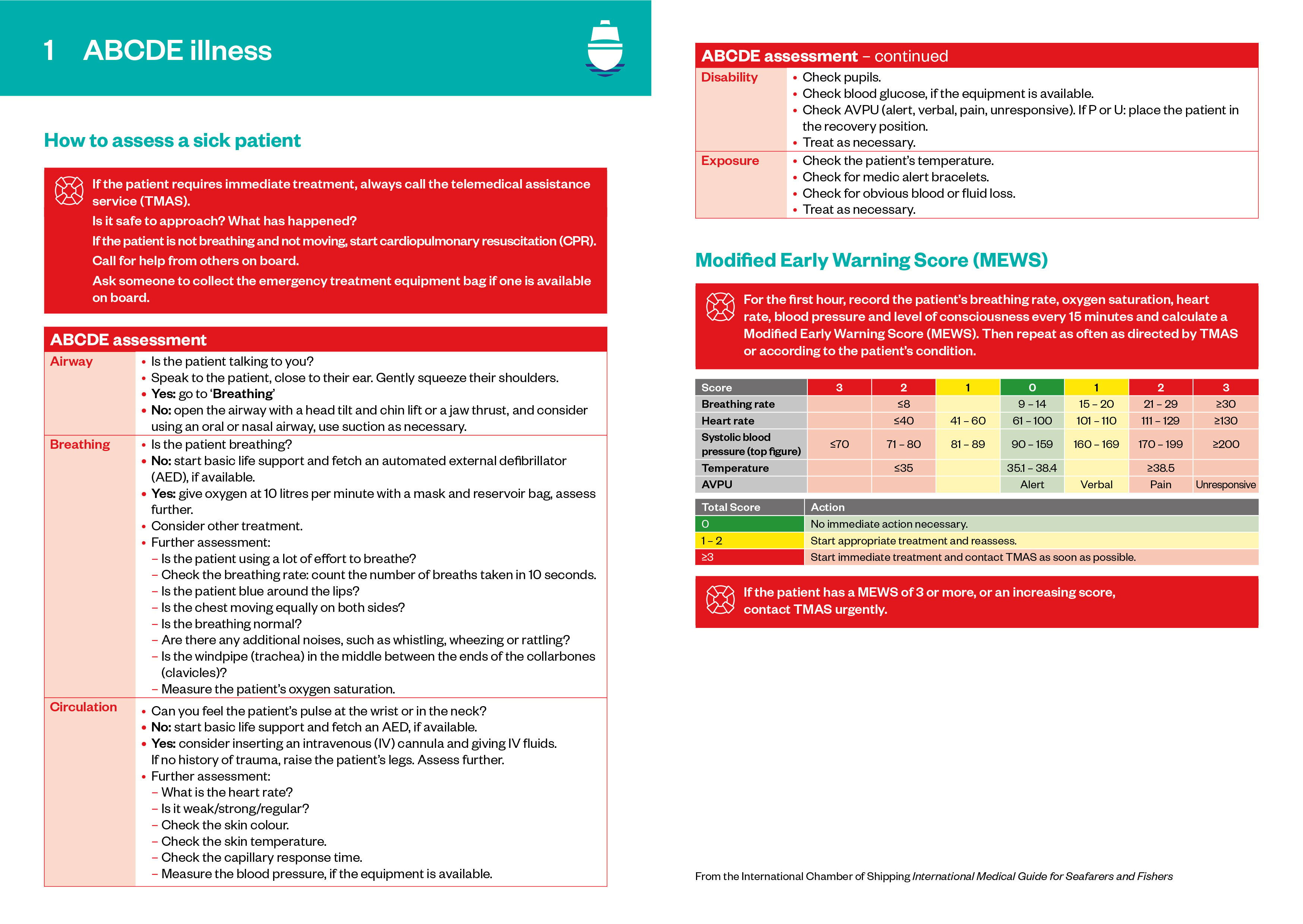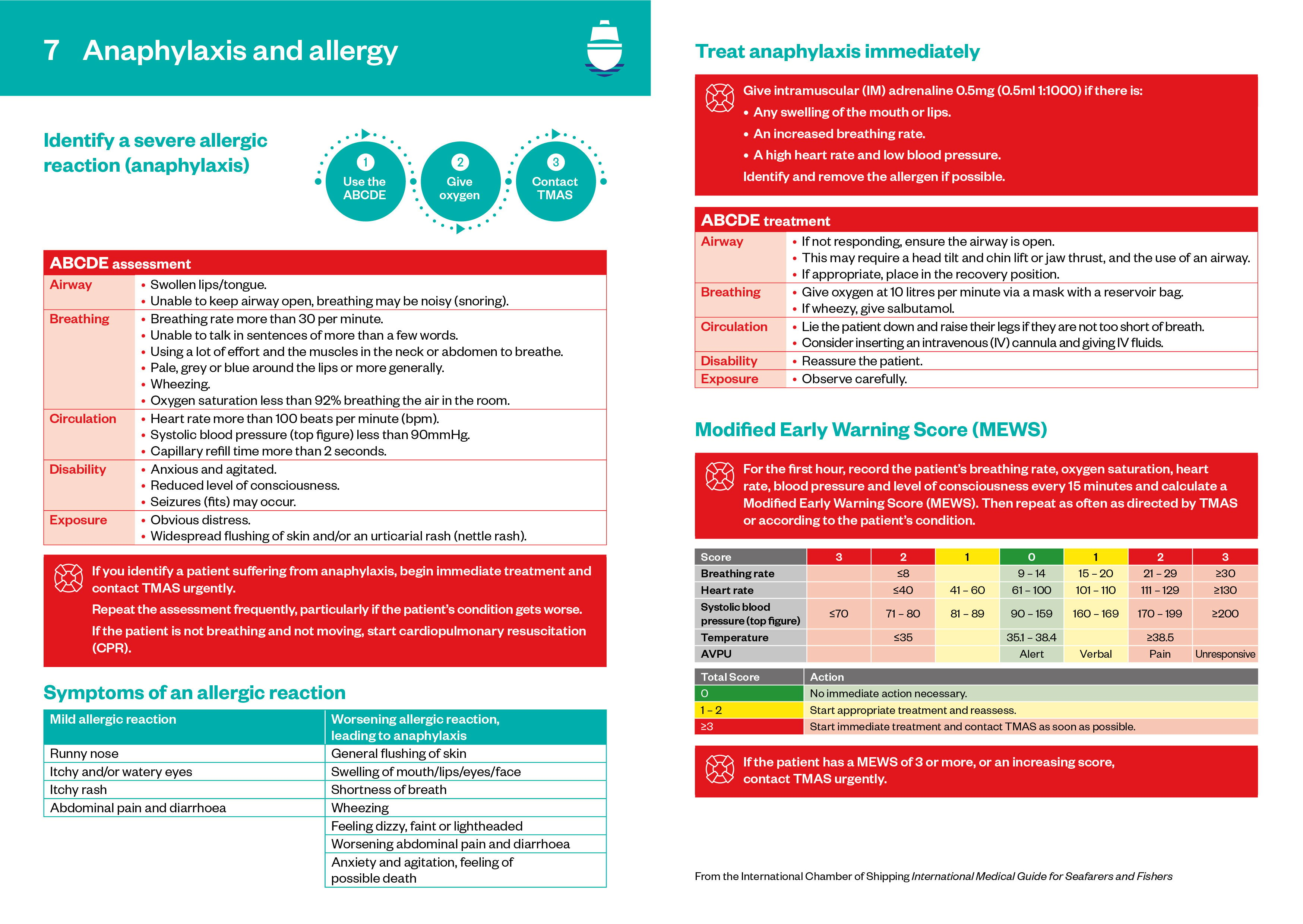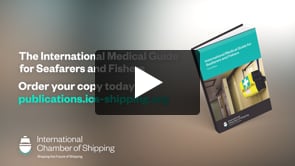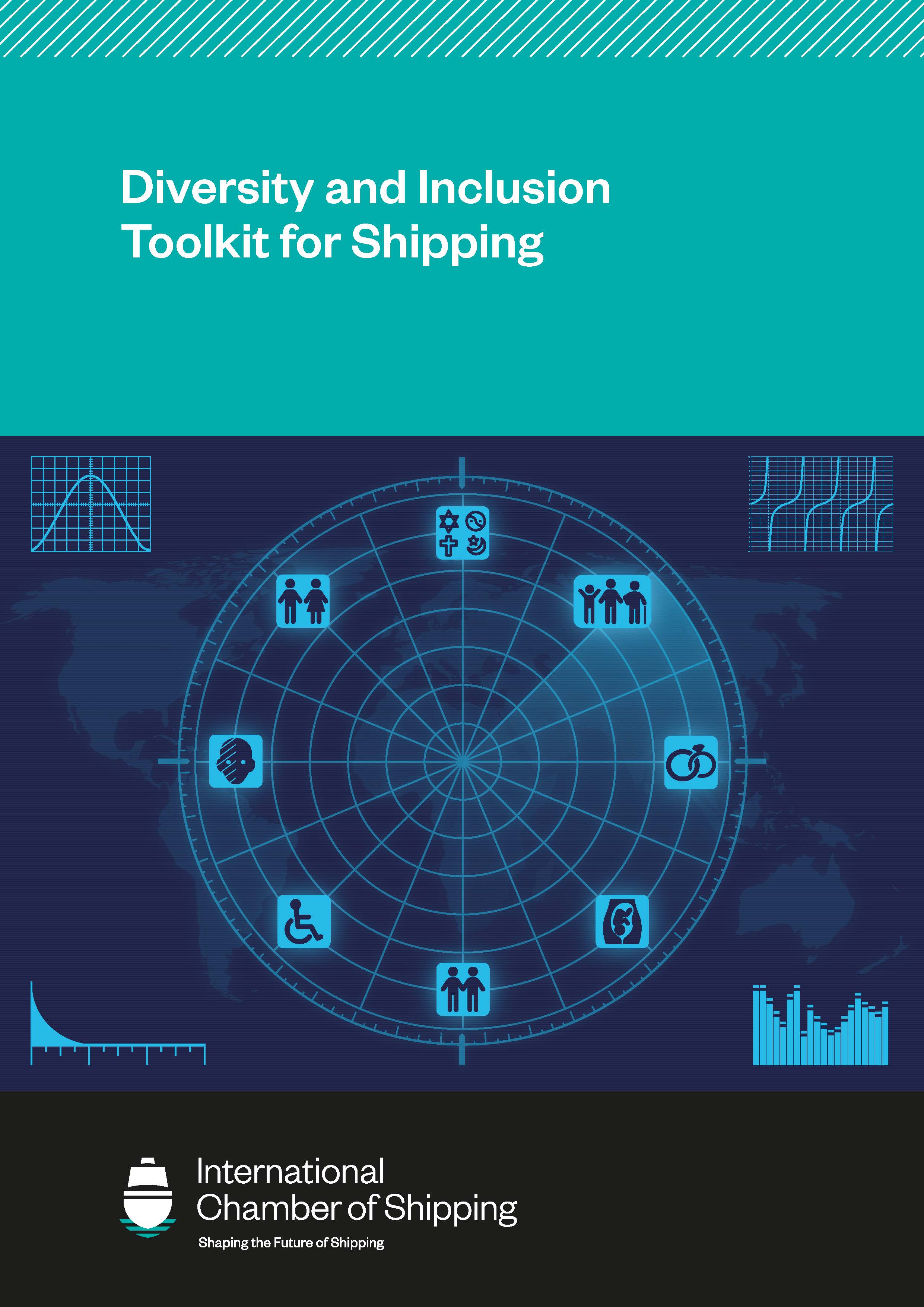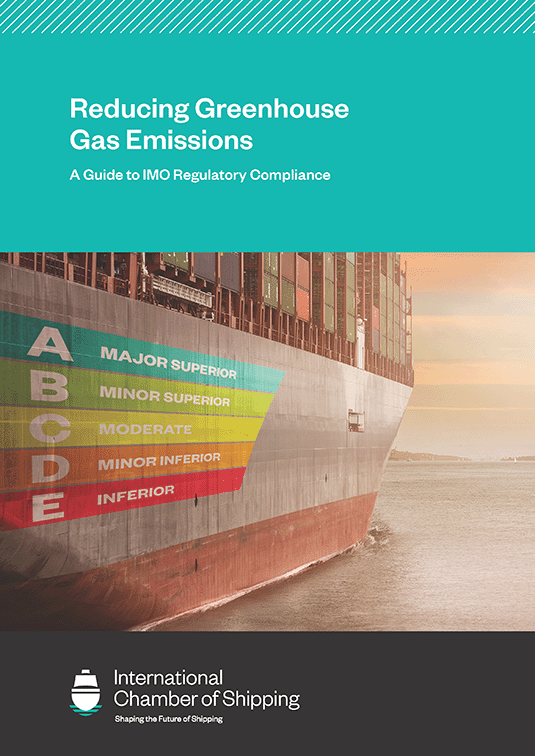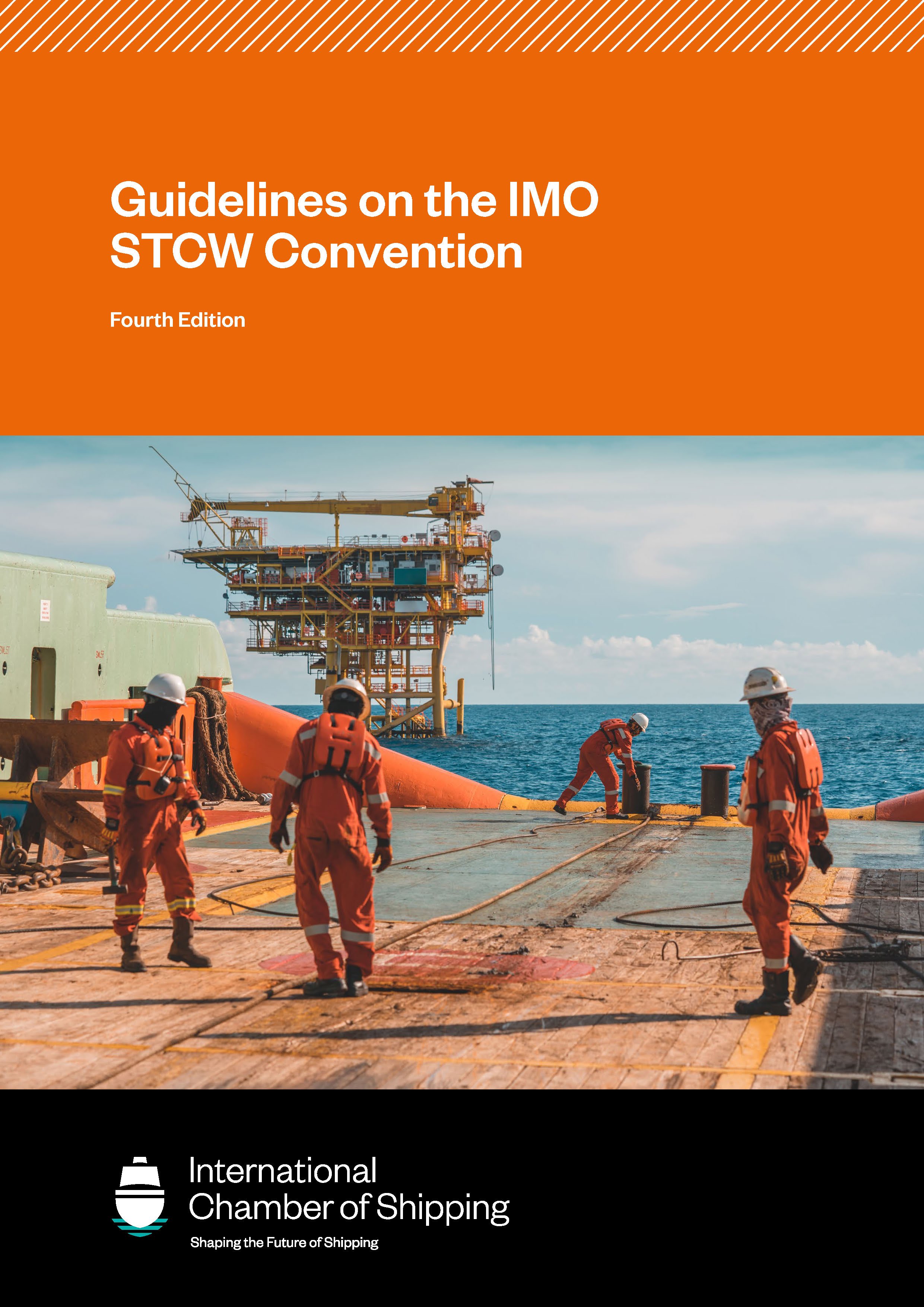In stock
International Medical Guide for Seafarers and Fishers
£ 225
Recommended by:
- Panama Maritime Authority
- Republic of the Marshall Islands Registry
- The Bahamas Maritime Authority
When a seafarer or fisher becomes sick or is injured at sea, it is up to one of their fellow crew members to provide medical relief until professional medical services can be reached. This person will have had limited medical training on shore, as required under the STCW Convention, but is not a fully-trained doctor. When confronted with a medical emergency far from land, the person responsible for medical care relies on telemedical assistance services (TMAS), the medicines and equipment available in the on board medicine chest, and the on board medical guide for support.
This modern and practical medical guide from ICS has been written and reviewed by an international group of maritime medical practitioners and experts with many years' experience of working with and training seafarers and fishers. It can be used on board all ships and fishing vessels, anywhere in the world, and in onshore safety departments, medical assistance centres and training institutions who support seafarers and fishers.
The International Medical Guide for Seafarers and Fishers is:
1. International and applicable globally
- Terminology and medical guidance is recognised and applicable globally
- Medicines and equipment are available globally, right now
- Reviewed and approved by international organisations representing shipowners, seafarer unions and maritime health professionals
- Latest medical knowledge from maritime medical practitioners from every continent available in one guide
2. Comprehensive and up-to-date
- Guidance on all injuries, illnesses and health issues experienced on ships and fishing vessels
- Brand new chapters not available in existing international guides, including a chapter on assessing and treating mental health
- Action cards address emergency situations and can be carried in the medical bag for quick access
- Updated Ship’s Medicine Chest includes medicines and equipment that are easy to source anywhere in the world, right now
3. Practical and user-friendly
- Easy-to-use format for a non-medical professional to navigate and apply in a medical situation
- 3D visual aids, tables, charts and assessment forms to help crew follow procedures correctly and find the most important information quickly
- Print and digital ebook formats available to give shipping companies flexibility and confidence that a guide will always be available in a way that suits crews and voyages
- Comprehensive index includes symptoms to help readers find what they need quickly
Featuring a foreword from Kitack Lim, Secretary-General of the International Maritime Organization (IMO), and written in collaboration with the International Transport Workers’ Federation (ITF) and International Maritime Health Association (IMHA).
The £225 RRP includes:
- The International Medical Guide for Seafarers and Fishers, 608pp, full colour, A4 half-Canadian;
- 10 A5 laminated action cards, full colour; and
- The Ship’s Medicine Chest to accompany the International Medical Guide for Seafarers and Fishers, 60pp, full colour, A4 paperback.
Read the full Introduction, Foreword and Contents List below.
Carriage of a medical guide on board is mandatory under the International Labour Organization’s Maritime Labour Convention (ILO MLC) and the International Maritime Organization’s (IMO) International Convention on Standards of Training, Certification and Watchkeeping for Seafarers (STCW) Convention. The fishing industry requires proper medical care to be provided on board under the ILO Work in Fishing Convention, and medical training for those providing first aid care under the IMO STW-F 1995 Convention.
Additional Information
| Author | International Chamber of Shipping |
| Publisher | International Chamber of Shipping Publications |
| Edition | First Edition |
| Publication month | 2023 - March |
| ISBN | 978-1-913997-13-7 |
| Shipping Weight | 2.500Kg |
Resources
Contents
Foreword Introduction: How to use this book Abbreviations Section 1: Illnesses and medical problems 1 ABCDE: assess a sick patient 2 CPR and defibrillators 3 Choking 4 Breathing problems 5 Shock (circulatory collapse) 6 Major bleeding (haemorrhage) 7 Chest pain 8 Anaphylaxis and allergy 9 Seizures (fits) and convulsions 10 Headache 11 Loss of consciousness 12 Stroke (cerebrovascular accident) 13 Diabetes 14 Sepsis and infectious diseases 15 Acute abdominal pain 16 Heat-related illnesses 17 Drowning 18 Hypothermia and cold injuries 19 Poisoning 20 Acute eye problems 21 Acute ear, nose and throat (ENT) problems 22 Acute dental problems 23 Back pain 24 Joint pain 25 Urinary tract and male genital problems 26 Sexually transmitted infections 27 Gynaecological problems 28 Menstruation, pregnancy, miscarriage and childbirth 29 Common skin problems 30 Seasickness 31 Mental health issues 32 Alcohol, tobacco and drug misuse Section 2: Injuries and trauma 33 ABCDE: assess an injured patient 34 Head, face and eye injuries 35 Neck and spinal injuries 36 Chest injuries 37 Abdominal injuries 38 Pelvic and hip injuries 39 Injuries to bones, joints, muscles and other soft tissues 40 Wounds and bleeding 41 Burns 42 Bites and stings Section 3: Additional information 43 Assessing and managing pain 44 Practical procedures 45 Communicating with TMAS, and documentation 46 Moving a sick or injured patient 47 Medical assessment ashore 48 Medical evacuation 49 Continuing care 50 Care of others on board 51 Death on board 52 Officer responsible for medical care 53 Health risks on board 54 Anatomy and physiology 55 The International Health Regulations Section 4: Assessment forms and charts Fluid balance chart Medical assessment form Medication chart Observation chart Index |
Foreword
The International Medical Guide for Seafarers and Fishers is a guide designed for non-medical professionals to help prepare them to handle medical emergencies when working at sea. This practical guide provides a useful complement to the International Medical Guide for Ships, produced by the International Labour Organization (ILO), the International Maritime Organization (IMO) and the World Health Organization (WHO). Training and carriage requirements on medical guides are provided in relevant instruments of IMO and ILO, respectively. The importance of having access to medical care on board ships cannot be emphasised enough and medical guidelines are vital for ensuring proper knowledge and rapid response in medical emergencies. The International Chamber of Shipping (ICS) and International Maritime Organization (IMO) enjoy a close working relationship. ICS contributes significantly to IMO’s work through active participation at IMO meetings and publishing guidance in support of international regulations is evidence of that. This guide has been produced in collaboration with maritime medical professionals from leading organisations to address an industry need in a practical manner by means of an up-to-date medical guide to help improve the standards of medical care on board. As a former seafarer, I know first-hand how important it is that good medical care is available should any seafarers fall unwell on board a ship. In all situations that require medical attention, it is vital that the appropriate treatments, medicines and equipment are accessible, combined with the knowledge to handle any medical emergencies that may arise. In this guide, advice is presented in a user-friendly way so that the information is straightforward and easy to understand for those with limited medical training. The Medicine Chest section of the guide includes the latest and internationally available medicines and recommended contents for a ship’s medical bag, and portable action cards have been included for crew to carry and use in a medical situation. Seafarer welfare is of the utmost importance. Although it is always the hope that no one will require urgent medical care, we must ensure that seafarers are equipped with resources to aid them in tackling medical emergencies should they arise. Kitack Lim Secretary-General International Maritime Organization |
Introduction
How to use this book Dear seafarers and fishers of the merchant fleet, Welcome to the new International Medical Guide for Seafarers and Fishers. As the person responsible for medical care on board a ship or a fishing vessel, your role is to take care of your sick or injured colleague until professional medical services can be reached. This may be under difficult circumstances and far from land, but you are not alone: this guide is your on board companion and telemedical assistance services (TMAS) will be on hand to support you and recommend treatment that can be delivered on board. Carriage of a medical guide on board is mandatory under the International Labour Organization’s Maritime Labour Convention (ILO MLC). The International Maritime Organization’s International Convention on Standards of Training, Certification and Watchkeeping for Seafarers (IMO STCW) outlines the mandatory minimum standards of training for officers responsible for medical care and requires seafarers to be trained in the treatment of injuries or conditions in accordance with national and international medical guides. The fishing industry requires proper medical care to be provided on board under the ILO Work in Fishing Convention, and medical training for those providing first aid care under the IMO STW-F 1995 Convention. Structure and contents The medical guide is not written for doctors but as a tool for you as the person responsible for medical care on board. Great efforts have been made to present the many subject areas in an accurate and accessible way. The guide is divided into four main sections – injuries; illnesses; additional information; and assessment forms and charts – and is accompanied by the Ship’s Medicine Chest, which lists the medicines and medical equipment to be carried on board. The injuries and illnesses sections follow a fixed structure:
The guide includes several features to quickly highlight important information and help you assess and treat your colleague:
The new recommended medicine chest includes medicines that are globally available and generally easy for shipowners and suppliers to get hold of, and are referenced in the book. Always check with telemedical assistance services (TMAS) before administering medicines if advised to do so. Guy Platten Secretary-General International Chamber of Shipping |
.jpg)
